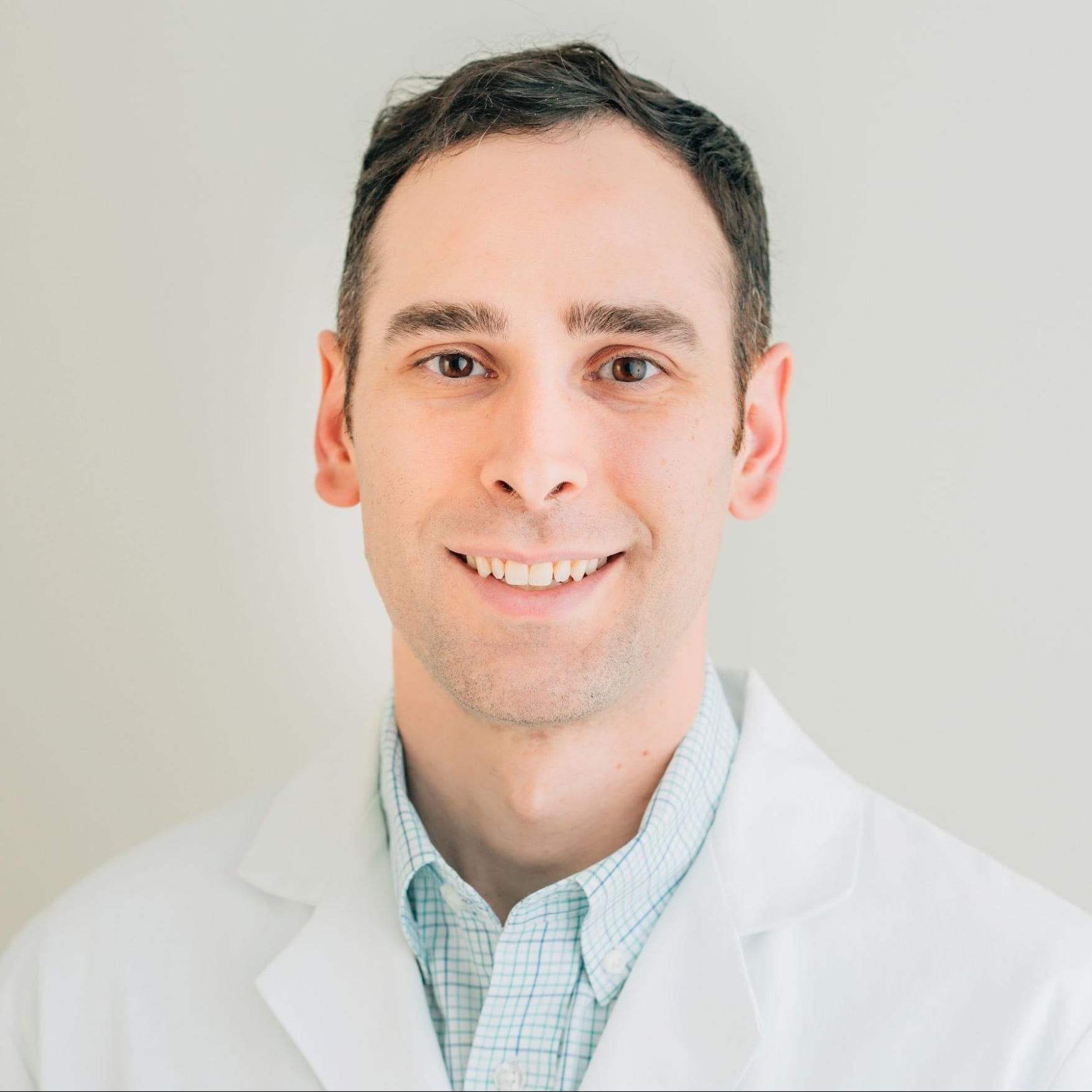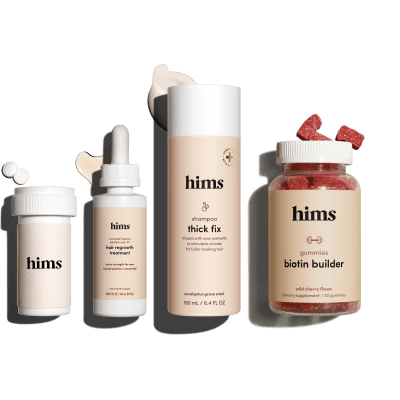Content
FDA approved for more than 25 years
What 6 Months of Hair Growth Looks Like

Whether you’re noticing thinning hair or trying to grow out a short haircut that didn’t quite work out as planned, it’s normal to wonder what six months of hair growth looks like.
The good news is that if you’re starting to lose your hair, you can make a surprising amount of progress in six months, especially with the help of hair loss medications like finasteride and minoxidil.
Below, we’ve discussed the basics of how your hair grows, as well as how much hair you can expect to grow over a period of six months.
We’ve also covered how much hair growth progress you can expect from science-based hair loss medications like finasteride and minoxidil over the same time period.
Content
How Fast Does Hair Grow?
According to the American Academy of Dermatology, your hair grows at a rate of approximately six inches per year, or about half an inch per month.
This means that over the course of six months, your head hair will grow by approximately three inches.
Your rate of hair growth involves several phases, referred to as the hair growth cycle. About 85 percent to 90 percent of the hairs on your head are in the anagen phase (active growth phase) of this process at any one time, meaning most of your hair is growing on a daily basis.
The other two phases are the telogen phase (resting phase) and the catagen phase (transitional phase), which account for the remaining 10 percent of the growth cycle.
It’s important to keep in mind that it’s natural to shed some hair, even when your hair is actively growing.
On average, you can expect to shed between 50 and 100 hairs per day as a result of your hair follicles entering different phases of the hair growth cycle. This range is considered normal hair loss.
Beyond shedding, hair loss is common, too — research shows that slightly more than half of all men experience moderate to severe hair loss by their late 40s, making male pattern baldness one of the most common appearance-related issues for men.
All about hair, here
Does Finasteride Work in Six Months?
Finasteride — a popular medication that’s approved by the U.S. Food & Drug Administration (FDA) for male pattern baldness — starts working right away, but it usually takes several months before you’ll be able to see any changes in your hairline, hair thickness or the general appearance of your hair.
As we’ve discussed in our finasteride results timeline, you’ll usually start to see an improvement after using finasteride consistently for three to six months.
In a study published in the European Journal of Dermatology, researchers found that “significant improvements” from finasteride were visible after 12 weeks (just under three months) of use.
In clinical trials, most men who use finasteride show the most noticeable improvements after 12 months of treatment.
Overall, you should see some improvements in your hair after using finasteride for six months, although it may take 12 months for the medication to become fully effective.
Does Minoxidil Work in Six Months?
Like finasteride, minoxidil starts working as soon as it’s absorbed by your body, although it takes a few months for its effects to become noticeable.
A study published in the Journal of the American Academy of Dermatology found that minoxidil produced a “statistically significant increase” in hair growth in balding men after 16 weeks (just under four months) of daily use.
Since minoxidil works by moving hairs into the anagen phase of the hair growth cycle, your hair may look thinner than usual during the first few months of treatment.
Our guide to how long minoxidil takes to start working goes into more detail about what you can expect during the first few months of treatment with minoxidil.
Will you join thousands of happy customers?
4.5 average rating
How to Promote Optimal Hair Growth
If you’re starting to lose your hair, there are several steps that you can take to stop further loss and stimulate healthy, sustainable hair growth.
Use Finasteride and Minoxidil Together
Research shows that finasteride and minoxidil are more effective at promoting hair growth when used together.
For example, a study published in the journal Dermatologic Therapy found that 94.1 percent of balding men who used these medications together experienced improved hair growth over one year, versus 59 percent and 80.5 percent of men who only used minoxidil or finasteride, respectively.
Our Hair Power Pack features minoxidil and finasteride, plus other science-based hair products that you can use for optimal hair growth.
Use a Hair Loss Prevention Shampoo
Hair loss prevention shampoos, such as our Hair Thickening Shampoo, are hair care products designed to preven tdihydrotestosterone (DHT) from damaging your hair follicles and causing baldness.
A good-quality shampoo, used alongside finasteride and minoxidil, can provide an extra layer of protection against excessive hair loss. Wash your hair whenever your scalp starts to feel oily, which may be daily, every other day, or twice a week.
Eat a Balanced, Healthy Diet
While diet doesn’t play a role in male pattern baldness, certain vitamins, minerals, and nutrients are important for keeping your hair healthy and promoting growth.
For optimal hair growth, try to eat a balanced diet rich in nutrient-rich foods such as eggs, avocados, spinach, almonds, beans, and berries. When it comes to protein, prioritize sources of omega-3 fatty acids such as salmon and lean cuts of beef and lamb.
We’ve discussed these ingredients and their hair-related benefits in more detail in our full guide to the best foods to eat for hair growth.
Limit or Stop Hair-Unfriendly Habits
Certain habits and lifestyle factors can affect hair growth by contributing to a type of hair loss called telogen effluvium.
For example, stress is known to cause this form of hair loss. Some research also suggests that smoking may damage the DNA of hair follicles, affecting growth and contributing to hair loss.
Other research has even found that drying your hair using overly hot air or holding it too close to your hair can cause damage to your hair shafts that may affect your hair’s strength and texture.
Our guide to How to Make Hair Grow Faster For Men lists science-based techniques that you can use to limit hair damage and grow thicker hair as quickly as possible, but below are a few effective ways to promote hair growth.
Topical Finasteride
If a pill feels like an overwhelming way to treat male pattern hair loss, our topical finasteride and minoxidil spray could be for you. This is the FDA-approved dynamic duo. When used together, men saw better results in clinical trials compared to using either alone.
Minoxidil Solution
Generic for Rogaine®, this FDA-approved over-the-counter version of topical minoxidil is used for hair regrowth on the crown of the head. We offer minoxidil foam and minoxidil solution both at 5% strength.
Finasteride & Minoxidil
This is the FDA-approved dynamic duo. When used together, men saw better results in clinical trials compared to using either alone.
Oral Finasteride
If you’re looking for something effective but don’t want too many steps in your routine, this once-a-day pill could be right for you.
Hair loss treatments, delivered
Average hair growth over a year is about six inches in length, meaning you can expect about three inches of growth over a period of six months.
The expected six-month hair growth in males and females is similar as the hair growth rate is about the same for most people.
If you’re starting to lose your hair, six months is usually more than enough time for medications such as finasteride and minoxidil or foam minoxidil to start working.
Although the first few months of treating hair loss can feel boring, it’s important to take action as soon as you notice the early signs of balding to prevent your hair loss from worsening.
Our guide to male pattern baldness goes into more detail about the causes of hair loss and your options for stimulating new hair growth and maintaining a thick, full head of hair.
If you’re ready to take the next step, our online hair loss consultation can help you decide which hair loss treatment is right for you.
11 Sources
- Rhodes T, et al. (1998). Prevalence of male pattern hair loss in 18-49 year old men. https://pubmed.ncbi.nlm.nih.gov/9865198/
- AAD. (n.d.) What Kids Should Know About How Hair Grows.https://www.aad.org/public/everyday-care/hair-scalp-care/hair
- Badri T, et al. (2024). Minoxidil. https://www.ncbi.nlm.nih.gov/books/NBK482378/
- Chen L, et al. (2019). The Efficacy and Safety of Finasteride Combined with Topical Minoxidil for Androgenetic Alopecia: A Systematic Review and Meta-analysis. https://cdn.mednet.co.il/2012/05/the-efficacy-and-safety-of-finasterideminoxidil.pdf
- Hu R, et al. (2015). Combined treatment with oral finasteride and topical minoxidil in male androgenetic alopecia: a randomized and comparative study in Chinese patients. https://onlinelibrary.wiley.com/doi/abs/10.1111/dth.12246
- Kawashima M, et al. (2004). Finasteride in the treatment of Japanese men with male pattern hair loss. https://pubmed.ncbi.nlm.nih.gov/15319158/
- Lee Y, et al. (2011). Hair Shaft Damage from Heat and Drying Time of Hair Dryer. Annals of Dermatology. https://www.ncbi.nlm.nih.gov/pmc/articles/PMC3229938/
- Olsen EA, et al. (2007). A multicenter, randomized, placebo-controlled, double-blind clinical trial of a novel formulation of 5% minoxidil topical foam versus placebo in the treatment of androgenetic alopecia in men. https://pubmed.ncbi.nlm.nih.gov/17761356/
- PROPECIA® (finasteride) tablets for oral use. (2014). https://www.accessdata.fda.gov/drugsatfda_docs/label/2014/020788s024lbl.pdf
- Shenenberger DW, et al.(2002). Removal of Unwanted Facial Hair. https://www.aafp.org/pubs/afp/issues/2002/1115/p1907.html
- Trüeb RM. (2003). Association between smoking and hair loss: another opportunity for health education against smoking? https://pubmed.ncbi.nlm.nih.gov/12673073/
Editorial Standards
Hims & Hers has strict sourcing guidelines to ensure our content is accurate and current. We rely on peer-reviewed studies, academic research institutions, and medical associations. We strive to use primary sources and refrain from using tertiary references. See a mistake? Let us know at blog@forhims.com!
This article is for informational purposes only and does not constitute medical advice. The information contained herein is not a substitute for and should never be relied upon for professional medical advice. Always talk to your doctor about the risks and benefits of any treatment. Learn more about our editorial standards here.
Knox Beasley, MD
Dr. Knox Beasley is a board certified dermatologist specializing in hair loss. He completed his undergraduate studies at the United States Military Academy at West Point, NY, and subsequently attended medical school at Tulane University School of Medicine in New Orleans, LA.
Dr. Beasley first began doing telemedicine during his dermatology residency in 2013 with the military, helping to diagnose dermatologic conditions in soldiers all over the world.
Dr. Beasley is board certified by the American Board of Dermatology, and is a Fellow of the American Academy of Dermatology.
Originally from Nashville, TN, Dr. Beasley currently lives in North Carolina and enjoys spending time outdoors (with sunscreen of course) with his wife and two children in his spare time.
Education
Bachelor of Science, Life Sciences. United States Military Academy.
Doctor of Medicine. Tulane University School of Medicine
Training
Dermatology Residency. San Antonio Uniformed Services Health Education Consortium
Certifications
Board Certified. American Board of Dermatology
Publications
Wilson, L. M., Beasley, K. J., Sorrells, T. C., & Johnson, V. V. (2017). Congenital neurocristic cutaneous hamartoma with poliosis: A case report. Journal of cutaneous pathology, 44(11), 974–977. https://onlinelibrary.wiley.com/doi/10.1111/cup.13027
Banta, J., Beasley, K., Kobayashi, T., & Rohena, L. (2016). Encephalocraniocutaneous lipomatosis (Haberland syndrome): A mild case with bilateral cutaneous and ocular involvement. JAAD case reports, 2(2), 150–152. https://www.ncbi.nlm.nih.gov/pmc/articles/PMC4867906/
Patterson, A. T., Beasley, K. J., & Kobayashi, T. T. (2016). Fibroelastolytic papulosis: histopathologic confirmation of disease spectrum variants in a single case. Journal of cutaneous pathology, 43(2), 142–147. https://onlinelibrary.wiley.com/doi/10.1111/cup.12569
Beasley, K., Panach, K., & Dominguez, A. R. (2016). Disseminated Candida tropicalis presenting with Ecthyma-Gangrenosum-like Lesions. Dermatology online journal, 22(1), 13030/qt7vg4n68j. https://pubmed.ncbi.nlm.nih.gov/26990472/
Kimes, K., Beasley, K., & Dalton, S. R. (2015). Eruptive milia and comedones during treatment with dovitinib. Dermatology online journal, 21(9), 13030/qt8kw141mb. https://pubmed.ncbi.nlm.nih.gov/26437285/
Miladi, A., Thomas, B. C., Beasley, K., & Meyerle, J. (2015). Angioimmunoblastic t-cell lymphoma presenting as purpura fulminans. Cutis, 95(2), 113–115. https://pubmed.ncbi.nlm.nih.gov/25750965/
Beasley K, Dai JM, Brown P, Lenz B, Hivnor CM. (2013). Ablative Fractional Versus Nonablative Fractional Lasers – Where Are We and How Do We Compare Differing Products?. Curr Dermatol Rep, 2, 135–143. https://idp.springer.com/authorize?response_type=cookie&client_id=springerlink&redirect_uri=https%3A%2F%2Flink.springer.com%2Farticle%2F10.1007%2Fs13671-013-0043-0
Siami P, Beasley K, Woolen S, Zahn J. (2012). A retrospective study evaluating the efficacy and tolerability of intra-abdominal once-yearly histrelin acetate subcutaneous implant in patients with advanced prostate cancer. UroToday Int J, June 5(3), art 26. https://www.urotoday.com/volume-5-2012/vol-5-issue-3/51132-a-retrospective-study-evaluating-the-efficacy-and-tolerability-of-intra-abdominal-once-yearly-histrelin-acetate-subcutaneous-implants-in-patients-with-advanced-prostate-cancer.html
Siami P, Beasley K. (2012). Dutasteride with As-Needed Tamsulosin in Men at Risk of Benign Prostate Hypertrophy Progression. UroToday Int J, Feb 5(1), art 93. https://www.urotoday.com/volume-5-2012/vol-5-issue-1/48691-dutasteride-with-as-needed-tamsulosin-in-men-at-risk-of-benign-prostatic-hypertrophy-progression.html





